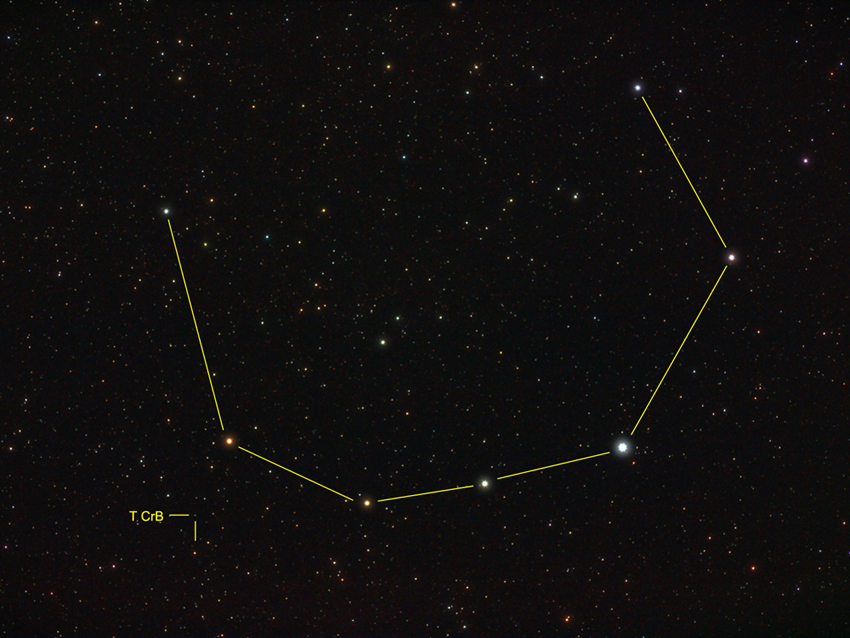Night Sky Highlights for October-December 2024
By Jim Mazur
Solar System
Mercury
This fall, the best chance to spot Mercury in the west after sunset will be on November 16 and for a few days before and after. You will need clear skies and a good view of the western horizon.
Venus
Throughout the fall, Venus will be visible in the evening sky, but it will be quite low in west after sunset. At about magnitude -3.9, it is the brightest object in the sky after the Sun and Moon. Through a telescope it will display a gibbous phase.
Mars
Mars will be visible in the early morning hours in October, and it will rise in the east at about 9-10 pm in November and about 7-8 pm in December. It is getting closer to Earth, and its disk will increase in apparent size from about 8″ in October to about 14″ at the end of December. It will be close to the Moon on December 18.
Jupiter
Jupiter will rise in mid-evening in October, and by December it will be rising around sunset. Its oblong disk and four brightest moons are easy to see with a small telescope.
Saturn
This fall, Saturn is in Aquarius, and it will be in a good position for observation through most of the night. Its rings are gradually closing up from our viewpoint, giving a very different look compared to what we have seen in the last few years.
Uranus
Uranus, in the constellation Taurus, will rise late in the evening in October, and it will reach opposition (rising at sunset) on November 16. A finder chart can be found at: https://theskylive.com/uranus-info
Neptune
Throughout 2024, Neptune will be trailing Saturn across the sky, lagging behind the ringed planet by less than an hour. At about magnitude 8, it can be found with binoculars or a small telescope. Here is a finder chart for Neptune: https://theskylive.com/planetarium?obj=neptune
Deep Sky Objects
Messier 2
Globular cluster in Aquarius
Messier 2 is a nice bright globular cluster, magnitude 6.6, about 16′ in diameter. It is a nice view through a small telescope and a very impressive one through a larger telescope. It has a dense and bright center. It is about 38,000 light years away. Star-hop chart
Messier 29
Open cluster in Cygnus
This is a small cluster of a few dozen stars, about 10′ across, just a few degrees away from the central star in the cross shape of Cygnus. The brightest stars for a rough dipper shape. It is about 5,000 light years away. Star-hop chart
Messier 39
Open cluster in Cygnus
Compared to M29, this is a much larger and brighter open cluster, about 29′ across. It has a loose structure that can be easily seen in binoculars and is a great target for a telescope with a wide-field eyepiece. Star-hop chart
Messier 52
Open cluster in Cassiopeia
Messier 52 is a rich open cluster of some 200 stars, about magnitude 6.9. A few of its stars can be seen with binoculars, but the best view is through a telescope at low power, where the cluster will stand out nicely from the Milky Way background. It is about 4,600 light years away. Star-hop chart
Messier 103
Open cluster in Cassiopeia
This is small but pretty cluster with a distinct triangular shape. Its magnitude is 7.4, and it is about 5′ across. Use a medium or high power eyepiece for the best view. Star-hop chart
NGC 7009, Saturn Nebula (Caldwell 55)
Planetary nebula in Aquarius
If you have never looked at this planetary nebula through a telescope, you should give it a try. It has two thin projections that make it resemble the planet Saturn. It has a pretty blue-green color. At magnitude 7.8, it can be seen in even small telescopes. It is estimated to be about 3000 light years away. Star-hop chart
NGC 7331 (Caldwell 30)
Galaxy in Pegasus
This is a very elongated spiral galaxy, about 9′ x 3′, and its oval shape should be visible in even small telescopes. Larger scopes will show some internal structure. There are four smaller and dimmer galaxies just to the east of NGC 7331 that may be seen with medium to large scopes. The galaxy is about 47 million light years away. Star-hop chart
Stephan’s Quintet
Galaxy group in Pegasus
This group of five faint galaxies is just 1/2 degree to the southwest of NGC 7331. A large telescope (12 inches or more) is needed to get a decent view of this dim group. The easiest to see is NGC 7320, which is actually much closer to us than the other four galaxies (about 40 million light years, compared to more than 200 million light years for the other four).
Mesarthim (Gamma Arietis)
Double star in Aries
This is a nice double, a matched pair of 4th magnitude blue-white stars about 7″ apart. They can be separated with just about any telescope at medium power. These are two stars are about 360 astronomical units apart, and about 164 light years from Earth. Star-hop chart
T Coronae Borealis, the Blaze Star
Recurrent nova in Corona Borealis
Some time soon, T Coronae Borealis may explode from its usual magnitude 10 to as bright as magnitude 2, easily visible to the naked eye. It may brighten this fall, or next year. No one knows for sure, but it has had outbursts at intervals of about 80 years in the past, and by that schedule it is due for another outburst soon. Through at least the end of November, Corona Borealis will be visible in the west after sunset, and a quick check will show if a “new star” has appeared in the constellation. The photo below shows the location of the star.

